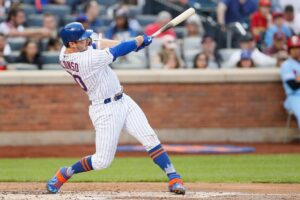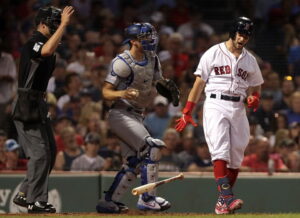by The Cowl Editor on September 26, 2019
Sports
By Cam Smith ’21
Sports Assistant Editor

A decade after the messy death of the steroid era in Major League Baseball, a new controversy has shaken the baseball world: the juiced ball era. The league has seen an astronomical rise in home run totals that put to shame even the numbers put up by steroid-enhanced players of the turn of the century. This dramatic increase in home runs will prove to be the jolt of energy necessary to revive the sport.
Indeed, it is no secret that baseball has seen a steady decline in popularity. In 2018, the league saw a harsh 4% drop in ballpark attendance, the largest slip in a decade.
Fewer people are also watching the game at home. The 2018 World Series drew only 14 million views per game. In comparison, the 1991 World Series brought in approximately 36 million viewers per game, a startling difference of 22 million.
The MLB has taken steps to remedy these troubling trends, mostly centered around increasing the pace of play. In 2019, the league shortened inning breaks, capped the number of mound visits per game at six, and experimented with a pitch clock during spring training.
Over the past few years, the league has also taken another subtle yet substantial step: remodeling the baseball itself.
The new ball is characterized by a less dense and better-centered core, smoother leather, and significantly lower seams. As a result, the ball has less drag and a smoother flight pattern when hit, causing the ball to travel further. And travel further the ball has.
On Sept. 11, the MLB surpassed the previous record of 6,105 total homeruns hit in a season, with nearly three weeks still left to play.
MLB commissioner Rob Manfred has denied that the league is intentionally juicing baseballs, yet he has made comments recently that suggest the league would be looking at the specifications of the ball. This is seen as a likely attempt to increase drag and decrease flight distance.
It is justified for the commissioner to want to take a look at the ball specifications, but instead of making the baseball less aerodynamic, he should aim to make it even more aerodynamic. Baseball desperately needs the long ball to add some much-needed excitement to the sport. Indeed, there is a reason All-Star Weekend features the Home Run Derby as its main attraction.
No fan goes to the stadium hoping their favorite player will lay down a spectacular bunt. It is the homerun ball baseball fans want, and it is the homerun ball the league needs in order to survive.
To stave off the plague of falling ratings and shrinking crowds, Manfred and the MLB must emphasize home runs as much as they can, as it may very well be baseball’s best chance to regain popularity.
By Scott Jarosz ’21
Sports Staff

As of Sept. 24, there have been 6,550 home runs hit this season in Major League Baseball. This figure comes with one week remaining in the regular season, as the last games are to be played on Sept. 29. This number has become a significant talking point throughout the baseball community, as home run production this season is the highest it has ever been by a staggering amount.
As a point of comparison, in the 2018 season, there were a total of 5,585 home runs hit. Going back further, in the 2015 MLB season, there were 4,909 total home runs hit. This increase in home run production in Major League Baseball raises the question: are more home runs good for baseball?
The rapid increase in the overall home run production throughout MLB history can be interpreted in several different ways. For one, some have argued that the increase in home runs is a result of the usage of new and improved technology by MLB teams. When watching any given MLB game from the 2019 season, batters can frequently be seen before or after at bats watching footage on tablets in order to prepare for upcoming at bats or review past at bats.
However, this theory fails to completely explain the shocking increase of 890 runs since the 2018 season.
A more common explanation of the significantly higher home run total this season is the possibility that the league is “juicing” the baseballs used in its games. Although this speculation has been going around for quite some time, it gained attention in July when Houston Astros star pitcher Justin Verlander gave his view on the issue, questioning MLB’s recent purchase of baseball-manufacturer Rawlings and accusing the commissioner of using juiced baseballs.
If the increase in home runs can truly be attributed to juiced balls as many players and fans believe, it is bad for the sport. Not only is it unfair to pitchers who are judged on their in-game performance, but it also takes the game away from its roots. If the MLB purchased Rawlings so it could alter the composition of baseballs, it would be problematic on many levels.
One of the most common explanations for the league wanting to juice baseballs is to increase the fan base, as home runs are considered among the most exciting plays in baseball. If this is true, the MLB is failing to understand that a significant portion of its fans watch the game because of its tradition and would oftentimes prefer to see a pitching duel that results in a 2-1 final score as opposed to a 12-10 slugfest.
Overall, it seems that the increase in home runs in the MLB is not beneficial for the sport, as it takes away from baseball’s roots and also can lead to longer games, which is an issue that the MLB has recently made a substantial effort to try to resolve.